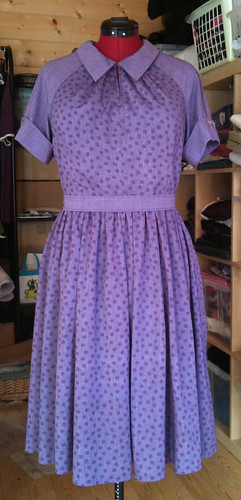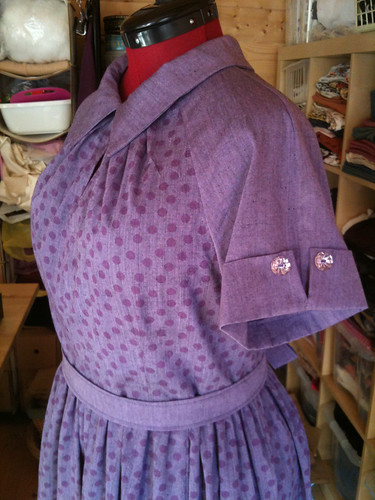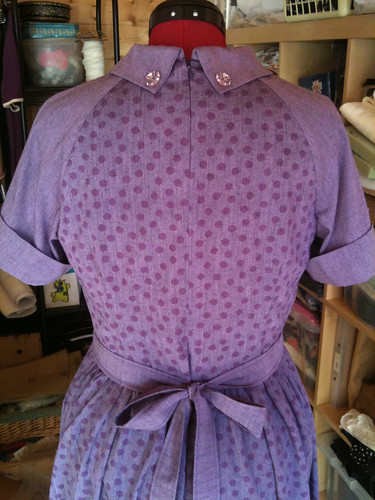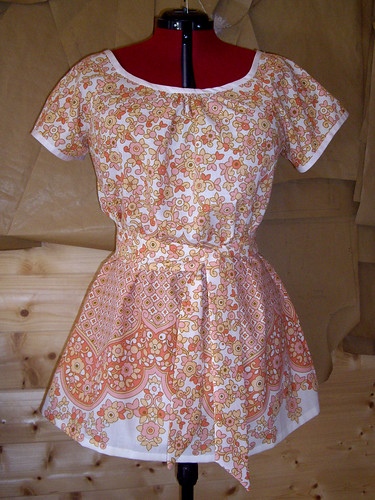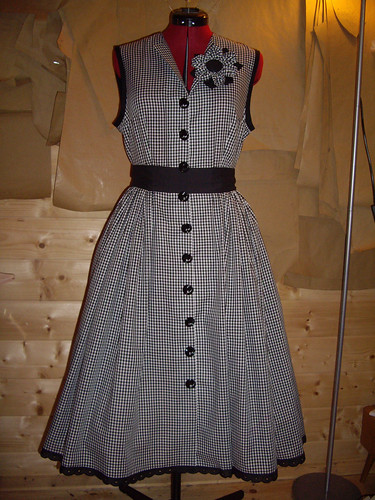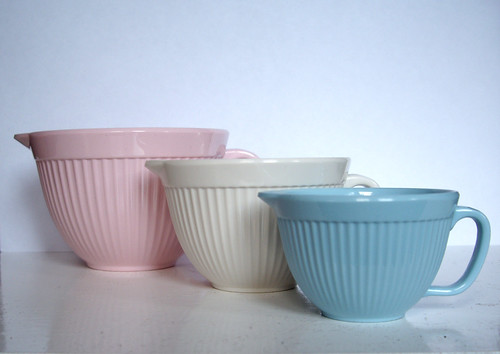This is Simplicity 1755, my new favourite dress. Fifties-inspired style? Check. Pockets? Check. Raglan sleeves? Check. Pretty collar? Check. Perfect!
Well, sort of.
Although the dress itself has come out lovely, the pattern leaves a fair bit to be desired. To begin with, the instructions for the button loops and sleeves are wrong. Somebody’s had a little centimetres versus inches confusion, because the instructions say to cut the button loops 2cm long, when they actually need to measure 5cm – about 2 inches. And the instructions for the placement of the button loop are wrong as well. In the end I decided to abandon the loops completely, and used a couple of sparkly buttons on each sleeve to hold the cuffs in place.
I also added a couple of sparkly buttons on the back of the collar, because the pattern didn’t seem quite right there either. The instructions call for hooks and eyes to close the two halves of the collar together at the back, but the pattern pieces simply aren’t the right shape for that to happen. So, the sparkly buttons are holding the back of the collar down to the dress, to stop the corners from flying away.
I’m pretty pleased with the invisible zip, considering it’s only the second one I’ve ever put in. It gaps a little bit at the waist, but the belt covers it, and all the seams match which is good. The waist isn’t terribly defined for a 1950s-inspired dress, but that’s because I had to grade it from a size 16 at the top to a size 20 at the waist to make it fit. I only hope that doesn’t make it look too frumpy, but the most important thing for me is that it’s comfortable.
The fabric is an organic cotton and bamboo mix, in heather and heather splash spot. I’ve used this bamboo fabric before, and it’s fantastically soft and luxurious. Bit crinkly though, so I foresee a fair bit of ironing in my future.
I’ll definitely be making this dress again, probably with a couple of modifications. The pockets are a little on the small side, so I’ll replace those with my own pocket pattern. I also have a shirt pattern with the most fantastically enormous raglan sleeves, and I can definitely imagine a long sleeved version of this dress. In fact, I may have just ordered three metres of this lovely stripy bamboo/cotton, to go with the leftover plain purple… perfect!

